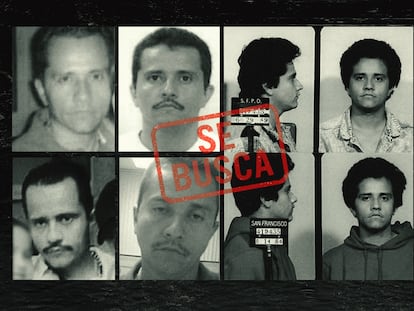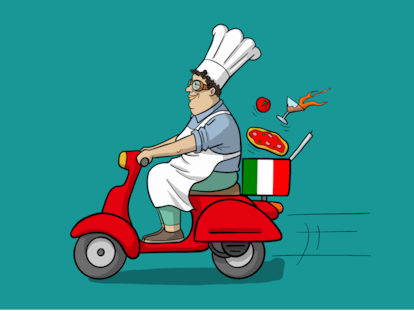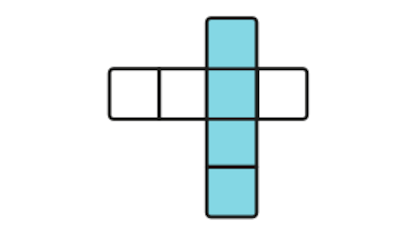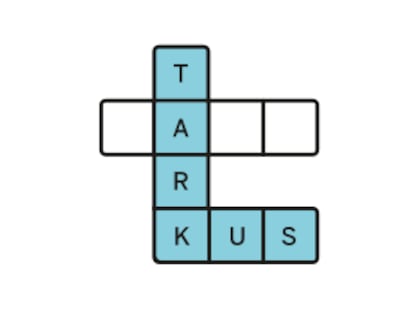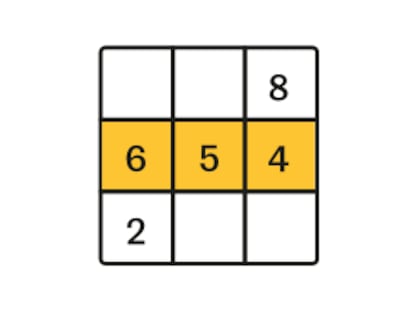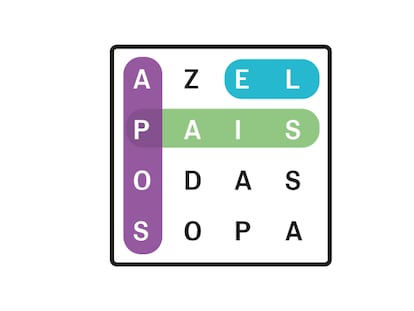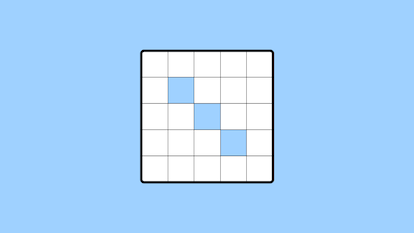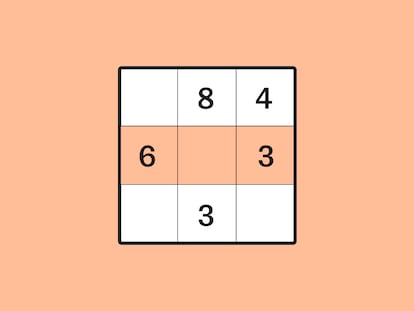The Jalisco New Generation Cartel, in the line of fire
The internal war that has weakened the Sinaloa Cartel has only strengthened its main rivals, but the pressure from the United States to capture its leader, along with the discovery of the Teuchitlán ranch, has refocused attention on the brutal organization


A battle broke out on the border between the Mexican states of Jalisco and Michoacán on March 16. In Guadalupe de Lerma, near where it all began, the first casualties fell. Desperate audio recordings began arriving at the barracks: “Help, help, help! We need help here at the entrance to Tanhuato. They have us in a damned truck. They attacked us on Highway 45.”
Amid the words, dry fire could be heard. From the operation bases, calmer voices issued orders, in contrast to the frantic ones coming from the front lines: “Zamora and Ocotlán, support for Vista Hermosa, they’re attacking at the entrance to Tanhuato. Apparently, there are several trucks.”
These internal communications, to which EL PAÍS has had access, grew increasingly urgent: “He’s moving people to Tanhuato, dude, it’s getting ugly. They just killed B., dude, they killed B. along with another one.”
Four soldiers, two National Guard members, and three hitmen were killed. After the shootings, the Jalisco New Generation Cartel (CJNG) blocked roads and set vehicles on fire. Three days later, 190 miles away, in Autlán de Navarro — one of the cartel’s epicenters — the army counterattacked by land and air, with the support of three helicopters. Two more National Guard members were killed.
Mexico is tightening its grip on the CJNG. These two days of violence highlight the intensifying war against the cartel, which had managed to stay under the radar in recent months. The internal war within the Sinaloa Cartel, between the Chapitos and Mayo factions, had drawn the attention of the Claudia Sheinbaum administration, with the president’s security czar, Omar García Harfuch, focusing on the city of Culiacán. With daily massacres and bodies dumped in the streets, the Sinaloan city was the priority.
Meanwhile, the Jalisco New Generation Cartel — led by Nemesio Rubén “El Mencho” Oseguera Cervantes — took advantage of the situation to strengthen its position while its main rival bled itself dry. But the discovery of the Izaguirre ranch in Teuchitlán — where the CJNG kidnapped, murdered, and tortured its victims, with evidence suggesting the use of crematoriums to dispose of their bodies — has made El Mencho and his crew a priority target once again.
Pressure from the United States to bring down the kingpin has also continued. U.S. President Donald Trump is threatening to impose tariffs on Mexico if it doesn’t curb the flow of illegal migrants and fentanyl trafficking, which the White House has made a top priority. The CJNG, along with the Sinaloa Cartel, is heavily involved in the production and distribution of fentanyl. President Sheinbaum attempted to appease Trump by handing over 29 leaders of various criminal organizations.
Now, Sheinbaum will need a new strategy to satisfy Washington’s demands the next time they sit down to negotiate. And there will be one: following a meeting between Sheinbaum and Trump’s Secretary of Homeland Security, Kristi Noem, this Friday in Mexico, Noem stated that “there is still much work to be done.” El Mencho’s head — the DEA’s most-wanted target, with a $15 million bounty on it — would be the perfect trophy.
CJNG expands its power
It won’t be an easy battle. “The CJNG has impressive strength. State officials are very vulnerable to their threats,” says a security source. “They have infiltration in all the prosecutor’s offices, state and federal, and Jalisco’s is no exception.”
Eduardo Guerrero, general director of Lantia Intelligence, a consulting firm specializing in organized crime, agrees: “The fight against Jalisco will gain new momentum, but the challenge is colossal because the CJNG has done nothing but consolidate its power in the last year. It has expanded and strengthened. In places like Veracruz, especially from the center to the south, it has a quasi-monopoly.” Guerrero believes that, with increased government pressure, the cartel will strengthen its strongholds: Jalisco, Guanajuato, and Michoacán.
There is a widespread belief among experts that the intensified persecution of the CJNG and El Mencho is more a response to pressure from the United States and a society exhausted by violence, shaken like never before by the horrors of Teuchitlán, than to a genuine initiative by federal and state governments.
“El Mencho has always been a very high-profile target. Now I see that they’re putting in a great effort to stop him,” says a source familiar with the operations. “The situation is forcing them to. Before, there was no will. You can’t operate with that level of impunity without the authorities turning a blind eye.”
Iliana Padilla Reyes, an academic at the Autonomous University of Mexico (UNAM) in Querétaro, believes that Sheinbaum “didn’t fully address the problem until Trump arrived.”
“They’re going to encounter resistance because the Jalisco government hasn’t shown any desire to confront the cartel, but I think they’re going to be dragged down by the intertia of events,” Guerrero adds.
Cecilia Farfán-Méndez, head of the North American Observatory for the Global Initiative against Transnational Organized Crime, agrees: “There’s a lot of pressure to produce results from the Trump administration,” but these are “very traditional actions against drug trafficking.”
Essentially, this includes arrests of high-profile figures and seizures. “To date, the government hasn’t shown any new attitude or ideas to combat the cartels,” adds Chris Dalby, author of CJNG: Mexico’s Most Dangerous Cartel.
Padilla Reyes makes a similar argument: “This strategy of going after the leaders is media-driven and sends a political message, but it paves the way for other leaders. As long as there isn’t a firm strategy to go all out, we’ll just be playing a media game.”
He argues that neither the cartel’s finances nor the political structure sustaining it are being targeted: “On the contrary, the messages have been about maintaining the pacts. There’s no coordinated social effort with state and municipal governments to generate diagnoses that would allow us, to begin with, to understand the causes in all these territories. They continue to be desk-based policies that aim to generate numbers for reports, not to understand what makes young people eager to join the war in Sinaloa or Jalisco.”
Dalby, director of World of Crime, a consulting firm specializing in drug trafficking and organized crime, also blames the White House for the current strategy: “The United States is returning to this obsession with killing or extraditing kingpins, but that doesn’t change anything and could make things worse.”
Farfán-Méndez agrees: “Sheinbaum is undoubtedly doing things that are more understandable to the United States. There is no rhetoric of ‘hugs, not bullets’ [the motto of Sheinbaum’s predecessor, Andrés Manuel López Obrador], which was interpreted as inaction.”
Guerrero does see a difference in Sheinbaum’s strategy compared to previous administrations. First, in the number and accuracy of arrests, with “much more precise strikes” due to intelligence work. Second, there’s greater coordination between military and civilian secretaries through García Harfuch. “We’ve never had a civilian command centralizing power in the Security Cabinet.” Third, there is a greater willingness to collaborate with the United States — something López Obrador only did when strictly necessary — since the Drug Enforcement Agency (DEA) now has two divisions dedicated to investigating Jalisco and Sinaloa. Fourth, Guerrero believes the arrests are more targeted at hitmen and logistics leaders rather than the “top brass, because they don’t want a fragmentation phenomenon that will generate more violence.”
The CJNG after Mencho
A source close to the Mexican presidency maintains that, despite the full military and intelligence apparatus, along with U.S. assistance, El Mencho has not yet been captured because “they have very carefully calculated the human cost of doing so”: “He always operates in heavily populated areas, and the number of deaths that stopping him would entail would be tragic.” They also want to avoid a violent power struggle within the cartel over his succession, similar to what happened in Sinaloa after the capture of Ismael “El Mayo” Zambada.
On the other hand, El Mencho has developed “a very sophisticated system of informants, he has a lot of information, and a large apparatus,” explains another security source. This network extends not only within the CJNG but also in the communities where he operates, which Padilla Reyes describes as “forced solidarity.” “Why was El Chapo hiding in Sinaloa, precisely where they were searching for him? Because in Sinaloa, he had all the grassroots support, all these well-established networks of complicity.”
The era of El Mencho is coming to an end — one way or another. Dalby believes his leadership has become more “spiritual” and symbolic than practical: the various CJNG cells now operate independently, and his arrest or death wouldn’t change that. The real risk is the battle for his succession. His brother Antonio was one of the 29 cartel leaders extradited to the United States; his other brother, Abraham, is in a Mexican prison, fighting in court to avoid the same fate; his son, Rubén Oseguera, known as El Menchito, was sentenced to life in prison earlier this month by a Washington court.
“The only one who can keep the cartel together is Juan Carlos González Valencia, the son of Rosalinda González, El Mencho’s ex-wife, from another man. El Mencho adopted him; they are very close,” says Dalby.
Otherwise, the cartel will face a dispute between lieutenants. “If there’s a war between factions, our homicide rate will skyrocket in several states,” predicts Guerrero.
Dalby agrees: “Of all the Mexican cartels in history, even more so than Los Zetas, the CJNG is by far the most violent. Between 2013 and 2023, 80% of cartel-related deaths were linked to them. That’s a chilling figure.”
Sign up for our weekly newsletter to get more English-language news coverage from EL PAÍS USA Edition
Tu suscripción se está usando en otro dispositivo
¿Quieres añadir otro usuario a tu suscripción?
Si continúas leyendo en este dispositivo, no se podrá leer en el otro.
FlechaTu suscripción se está usando en otro dispositivo y solo puedes acceder a EL PAÍS desde un dispositivo a la vez.
Si quieres compartir tu cuenta, cambia tu suscripción a la modalidad Premium, así podrás añadir otro usuario. Cada uno accederá con su propia cuenta de email, lo que os permitirá personalizar vuestra experiencia en EL PAÍS.
¿Tienes una suscripción de empresa? Accede aquí para contratar más cuentas.
En el caso de no saber quién está usando tu cuenta, te recomendamos cambiar tu contraseña aquí.
Si decides continuar compartiendo tu cuenta, este mensaje se mostrará en tu dispositivo y en el de la otra persona que está usando tu cuenta de forma indefinida, afectando a tu experiencia de lectura. Puedes consultar aquí los términos y condiciones de la suscripción digital.
More information
Archived In
Últimas noticias
Being trans or gay in a migrant detention center: ‘They call me faggot, queer, bitch’
The metaverse, four years later: Is it finished or just at a standstill?
$3,000 and a plane ticket: The United States increases incentives for migrants to self-deport before the end of the year
Charles Dubouloz, mountaineering star, retires at 36 with a farewell tour inspired by Walter Bonatti
Most viewed
- The low-cost creative revolution: How technology is making art accessible to everyone
- Christian Louboutin: ‘Young people don’t want to be like their parents. And if their parents wear sneakers, they’re going to look for something else’
- All the effects of gentrification in one corner of Mexico’s Colonia Roma
- Liset Menéndez de la Prida, neuroscientist: ‘It’s not normal to constantly seek pleasure; it’s important to be bored, to be calm’
- Christmas loses its festive spirit: ICE fears cast shadow over religious celebrations
